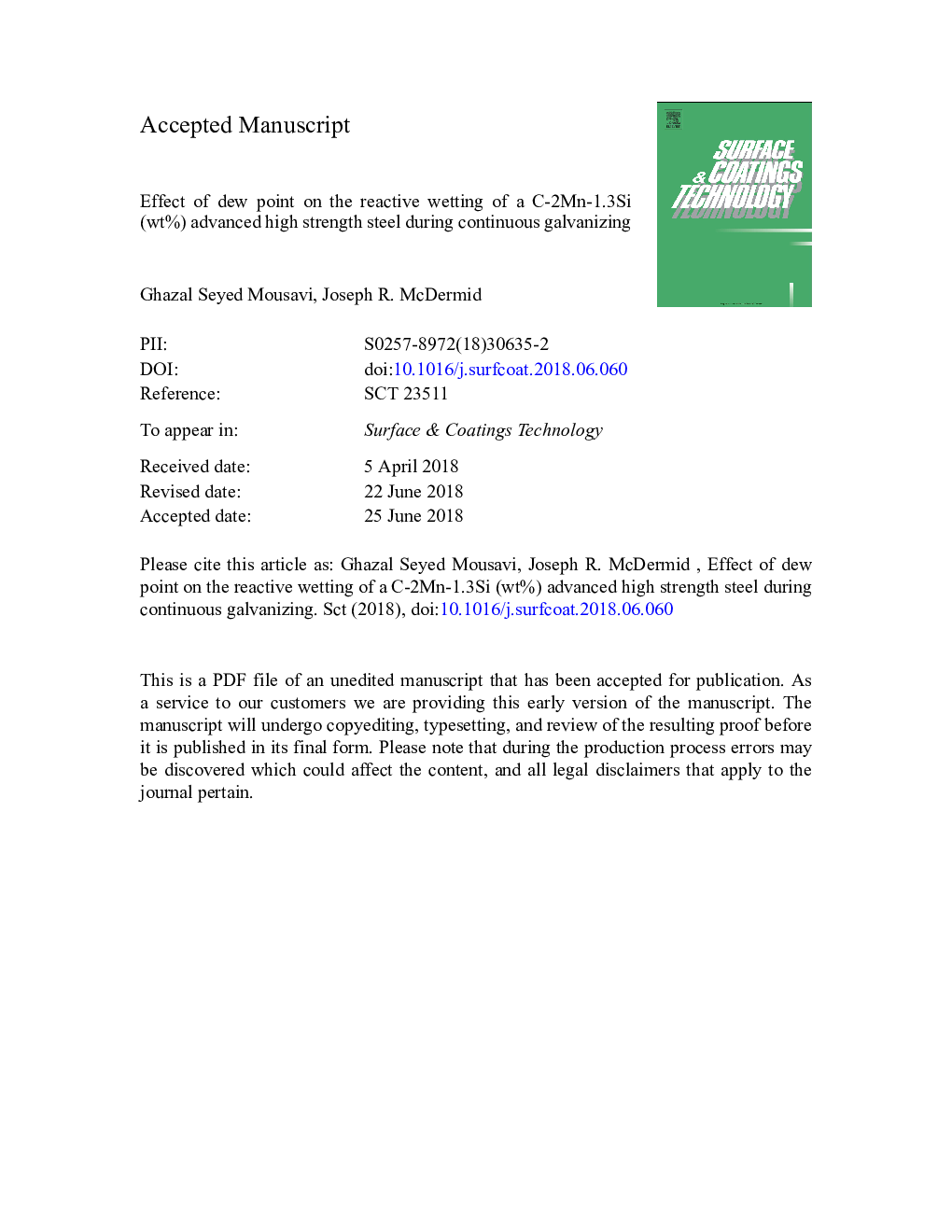| Article ID | Journal | Published Year | Pages | File Type |
|---|---|---|---|---|
| 8023212 | Surface and Coatings Technology | 2018 | 46 Pages |
Abstract
The effect of oxygen partial pressure on the reactive wetting of a Fe-0.1C-2Mn-1.3Si (wt%) advanced high strength steel during continuous galvanizing was determined. The steel was intercritically annealed at 1093â¯K (820â¯Â°C) for 120â¯s in a N2-5â¯vol% H2 process atmosphere, where the oxygen potential was controlled by varying the process atmosphere dew points at 223â¯K (â50â¯Â°C), 243â¯K (â30â¯Â°C) and 278â¯K (+5â¯Â°C). All samples were immersed in a 0.2â¯wt% dissolved Al continuous galvanizing bath at 733â¯K (460â¯Â°C) for 4â¯s. For the 243â¯K (â30â¯Â°C) and 278â¯K (+5â¯Â°C) dew point atmospheres, a well-developed Fe-Al intermetallic layer, indicative of good reactive wetting, was observed due to the presence of either thin or plate/nodule-like oxides on the steel surface after annealing. This external oxide morphology facilitated contact between the Zn-alloy bath and the substrate via a variety of mechanisms, including interfacial infiltration through cracks due to thermal coefficient of expansion mismatch between the external oxide and substrate and aluminothermic reduction, which resulted in Fe dissolution from the substrate and consequent formation of the observed Fe-Al intermetallics. On the other hand, the poor reactive wetting observed for the samples annealed under the 223â¯K (â50â¯Â°C) dew point atmosphere was due to the formation of a thick, compact oxide layer on the steel surface, which provided an effective barrier between the substrate and Zn bath, preventing contact between the two phases and the required Fe dissolution from the substrate surface.
Related Topics
Physical Sciences and Engineering
Materials Science
Nanotechnology
Authors
Ghazal Seyed Mousavi, Joseph R. McDermid,
